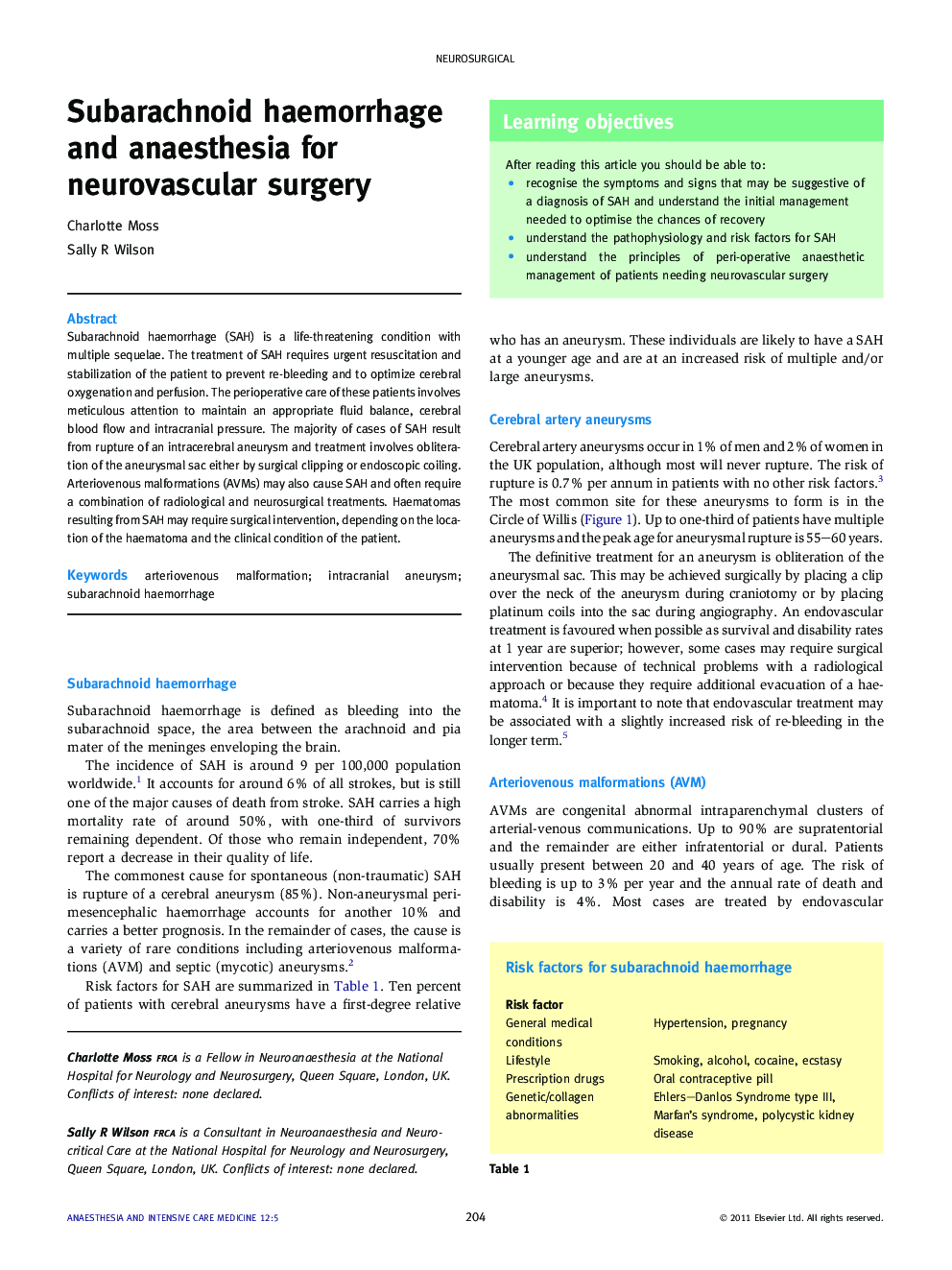| Article ID | Journal | Published Year | Pages | File Type |
|---|---|---|---|---|
| 2742744 | Anaesthesia & Intensive Care Medicine | 2011 | 4 Pages |
Subarachnoid haemorrhage (SAH) is a life-threatening condition with multiple sequelae. The treatment of SAH requires urgent resuscitation and stabilization of the patient to prevent re-bleeding and to optimize cerebral oxygenation and perfusion. The perioperative care of these patients involves meticulous attention to maintain an appropriate fluid balance, cerebral blood flow and intracranial pressure. The majority of cases of SAH result from rupture of an intracerebral aneurysm and treatment involves obliteration of the aneurysmal sac either by surgical clipping or endoscopic coiling. Arteriovenous malformations (AVMs) may also cause SAH and often require a combination of radiological and neurosurgical treatments. Haematomas resulting from SAH may require surgical intervention, depending on the location of the haematoma and the clinical condition of the patient.
